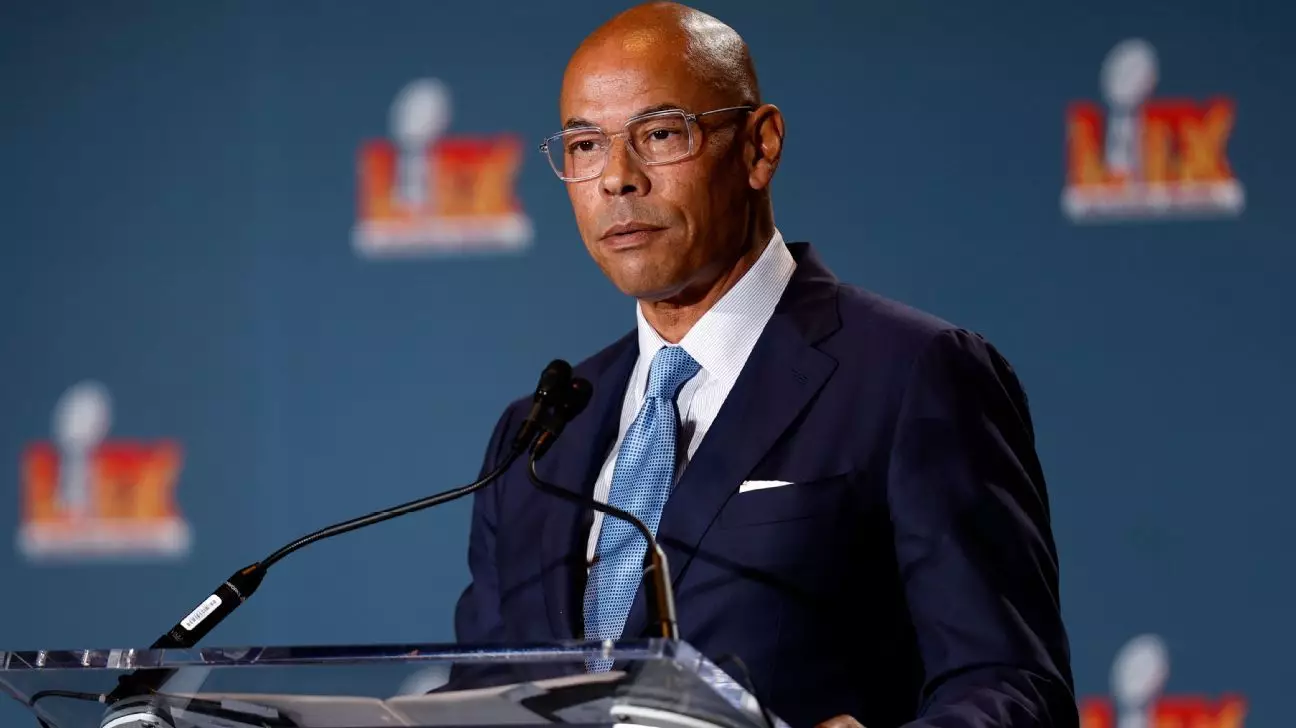Amid a period of significant upheaval within the NFL Players Association (NFLPA), the core question arises: does the leadership embody the transparency and strength necessary to represent a diverse and powerful player base? Recent developments suggest that the union’s internal cohesion is being tested more than ever. When the executive committee publicly vows unwavering support for Executive Director Lloyd Howell Jr., it raises eyebrows about the sincerity and stability of that support, especially given the ongoing scrutiny over Howell’s potential conflicts of interest. The conflicting narratives and internal consultations might hint at deeper fissures that threaten to undermine the union’s credibility and its capacity to serve players’ best interests.
The public stance of the union’s leadership emphasizes dedication to due process, explicitly dismissing reports suggesting leadership instability. But words alone cannot dispel the shadows cast by unresolved issues and ambiguity surrounding Howell’s simultaneous involvement with private equity interests and union responsibilities. This duality—financial ties to external firms while at the helm of the union—poses an existential question: can the NFLPA truly operate independently and prioritize players’ welfare amidst potential conflicts of interest? The union must confront this dilemma head-on if it wishes to rebuild trust and credibility among its constituents.
Conflicts of Interest and Questions of Integrity
At the heart of the controversy lies Howell’s role as a part-time consultant for the Carlyle Group, a private equity firm now seeking NFL franchise ownership stakes. The intersection of union leadership with private financial interests is no small matter. Critics argue that Howell’s involvement in such activities could compromise his ability to advocate for players, especially when his outside commitments might benefit from league decisions or shifts in ownership. The union’s internal inquiry — whether it’s about clear conflicts or perceived appearances of impropriety—seems insufficiently transparent.
Howell’s refusal to step down from Carlyle despite union concerns adds layers of complexity. The decision to stay in both roles suggests either a deep sense of conviction or caution about the repercussions of stepping away. Meanwhile, the opaque nature of the union’s internal deliberations, kept behind confidentiality agreements and limited disclosures, further fuels skepticism. Players deserve clarity and accountability, not just sanitized statements. Otherwise, the union risks losing credibility when core issues such as conflicts of interest inhibit its ability to advocate effectively.
Intra-Union Discontent and the Power of Public Scrutiny
The union’s response to the ESPN report—asserting unwavering support for Howell—may be more about managing public perception than addressing the root problems. Support within the executive committee appears to be fragile, especially considering reports of internal reviews commissioned to scrutinize Howell’s conduct. The hiring of external legal experts like Ronald C. Machen indicates an awareness that internal reviews may not suffice. Yet, transparency remains elusive; players and supporters are left to wonder whether these inquiries are thorough or merely superficial.
More concerning still is the confidentiality surrounding the arbitration decision related to league conduct. Details about league executives’ efforts to reduce guaranteed player contracts were shrouded in secrecy, revealing a potentially troubling pattern of information hiding within the union. Such confidentiality agreements not only hinder accountability but also undermine trust among players who are directly impacted by league negotiations and decisions. Players need to be empowered with full disclosure, especially when their livelihoods and collective bargaining are at stake.
Furthermore, the union’s decision to appeal the arbitration ruling—without providing full detail—signifies a vested interest in contesting league actions. While defending players’ rights is essential, the refusal to openly discuss the specifics breeds suspicion. Transparency shouldn’t merely be a rhetorical device but a fundamental principle if the union hopes to genuine reform and fortify itself against internal and external criticisms.
The Future of Leadership in the NFLPA
The controversy surrounding Howell’s leadership arrives at a delicate moment for the NFLPA. Elected in 2023, Howell inherits a storied legacy but faces the challenge of proving his integrity amidst mounting internal and external pressures. The repercussions of the current turmoil extend beyond individual credibility; they threaten to weaken the collective bargaining power of the union if players begin to question their leadership’s objectivity.
The union’s internal mechanisms—such as the review committee and external legal consultations—represent attempts at accountability, but their effectiveness hinges on transparency. Players deserve to see that their representatives are making decisions rooted in integrity and dedicated to their interests, not personal financial gains. Whether Howell remains at the helm or is replaced, the NFLPA must confront its internal conflicts openly, fostering a culture where truth and accountability are prioritized over quiet resolutions.
In the broader context, this episode symbolizes a pivotal moment for organizational integrity within professional sports unions. Leadership that is perceived as conflicted or opaque risks not only internal discord but also long-term damage to the union’s reputation. With that in mind, the NFLPA must move beyond public affirmations and confront its issues head-on—establishing clear boundaries, embracing transparency, and reaffirming its commitment to the players’ trust if it hopes to sustain its authority and relevance in the competitive landscape of professional football.


Leave a Reply